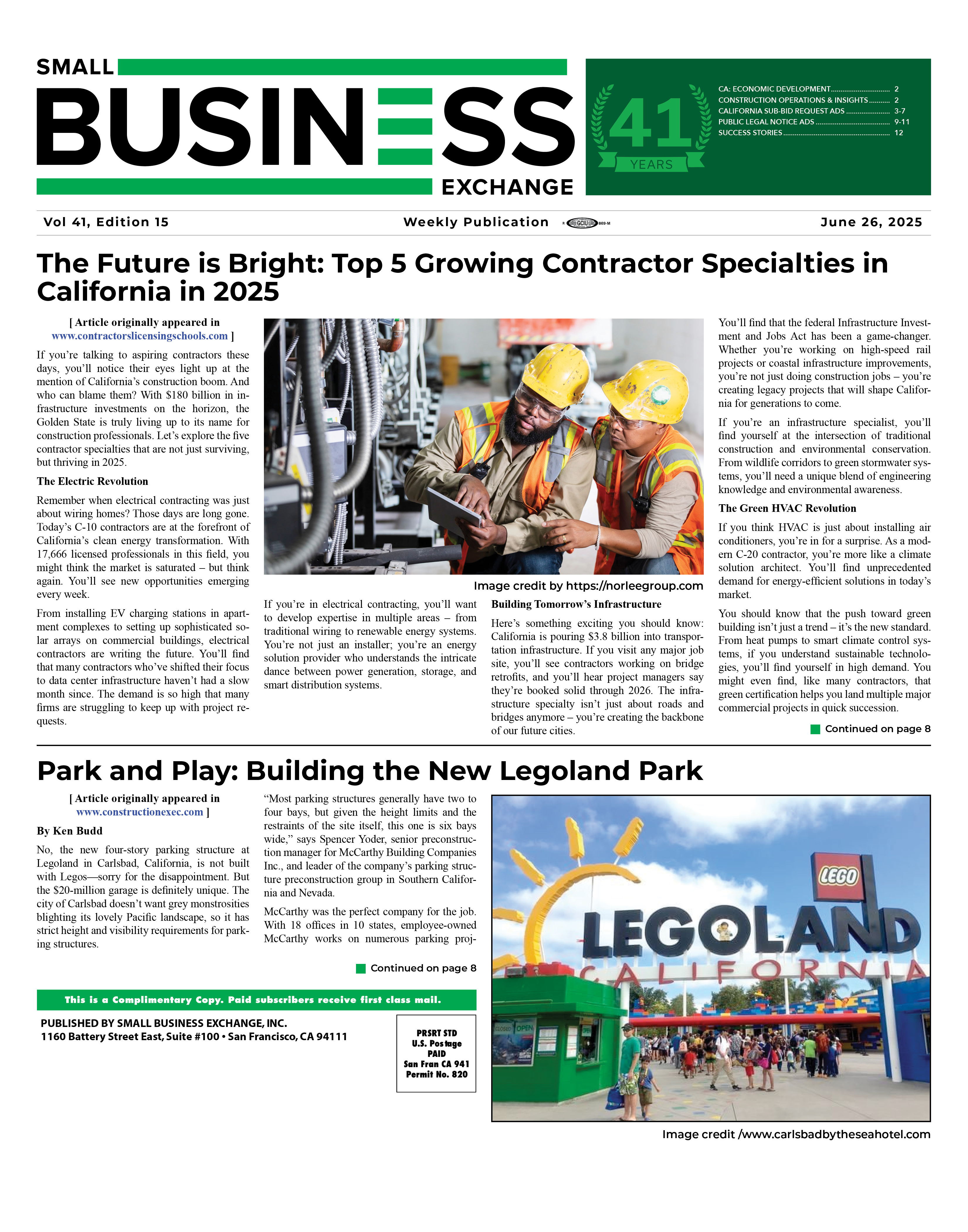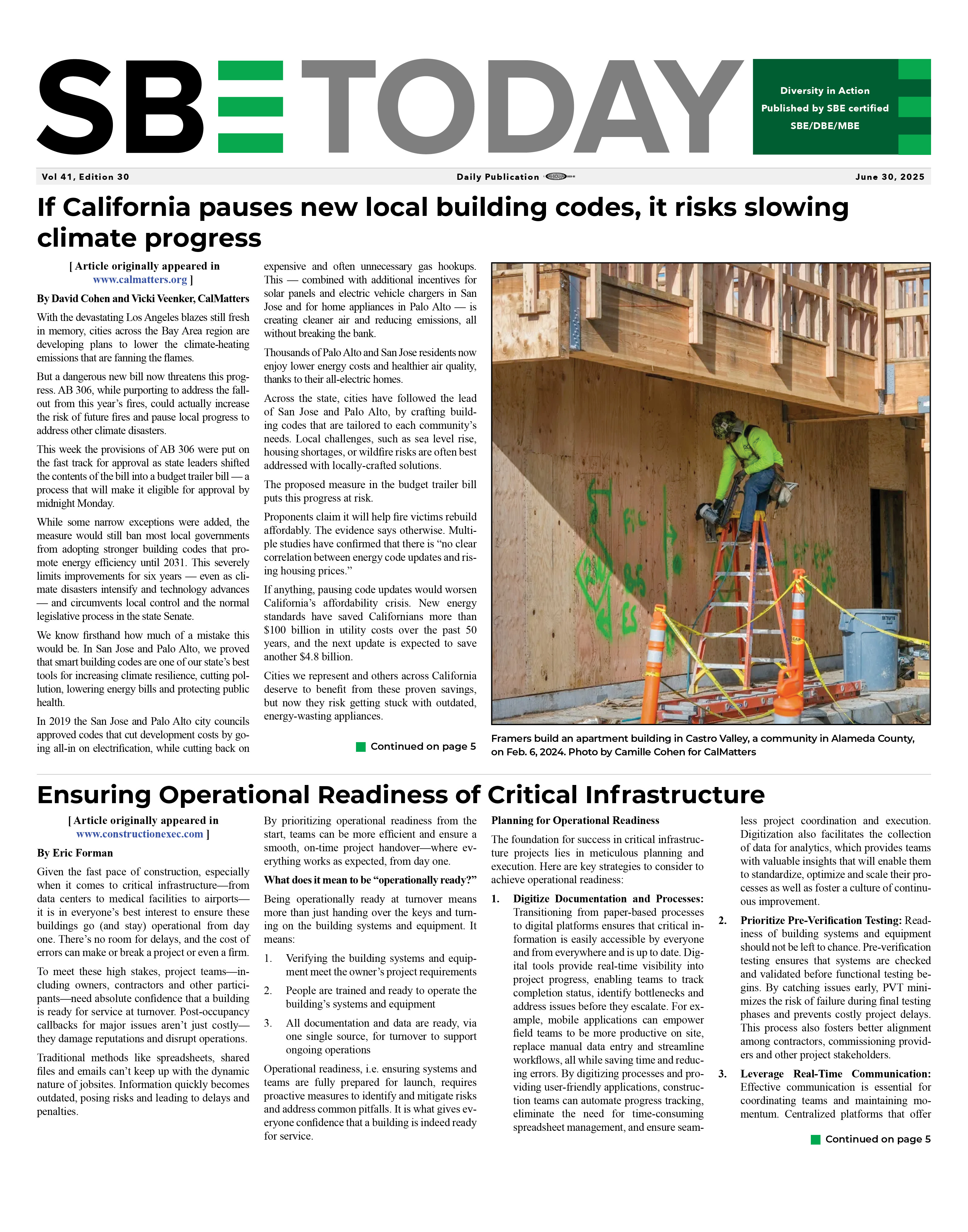Using Technology to Turn the Tide on Construction Productivity
01/18/2019
The facts are straightforward. The global average for the value-added per hour has inched up by 1% a year in the past 20 years—about one-quarter the growth rate of manufacturing. In the U.S. alone, construction productivity has steadily declined since 1968 while other sectors have seen productivity grow by 10 to 15 times. What’s fueling this unfortunate trend? McKinsey traces some of this to a productivity boom in the 1990s that fizzled and the 2007-2009 economic downturn. Other factors include everything from project complexity to a skilled labor shortage to under-investment in technology and digitization. There’s also the fact that many contractors have difficulty with planning. This is especially true if they are dependent on erratic government funding for projects. What’s Slowing Down Productivity?Many experts point to technology, aka digitization, as the key to improving construction productivity. However, investing in digital technologies and advanced automation is also a huge stumbling block for many contractors—including small firms where profit margins remain extremely tight. In fact, the U.S. construction industry has only invested 1.5% of value-added technology, compared with 3.3% in manufacturing, and an overall average in the economy of 3.6%. As a result, tackling the root causes of poor productivity becomes a vicious cycle where contractors routinely underspend on technology by up to 70%. The High Cost of Low ProductivityIt’s mind-boggling to think that construction-related spending accounts for 13% of the world’s GDP. Yet, the sector’s productivity growth has only increased 1% over the past 20 years. This adds up to $1.6 trillion in additional value that could be created through higher productivity, meeting half the world’s infrastructure needs. Last year’s McKinsey study noted that retail has transformed from mom-and-pop stores to large-scale retailers with global supply chains and digitized distribution systems. Another example is how manufacturing is using lean principles and automation to overhaul its industry. Meanwhile, the construction industry in North America has failed to modernize and struggled to meet the demands of an aggressive infrastructure program or address the U.S. housing shortage. Small Steps to Turn the TideWith contractors routinely blowing their schedule by 20% and their budget by 80%, new digital tech promises to boost productivity by as much as 60%. But where do contractors begin? Starting small is a great way to turn around productivity. Don’t attempt to boil the ocean with big, disruptive tech. For example, contractors can start by selecting, implementing, and training staff on software and tools that track all the variables of a construction project—from takeoff to estimating to bidding. When contractors have digital-level control over construction input, costs, processes, and relationships, they are more effective in using technology to complete day-to-day tasks. Using software over spreadsheets for takeoff, estimating, bidding, accounting, and project management mean contractors can immediately capitalize on efficiencies. It is also essential for contractors to look for integrated software solutions to step up productivity. Once contractors have mastered the digital basics, they can begin to consider more advanced, whiz-bang technology like 3D building information modeling (BIM), drones, and emerging 5D BIM platforms. Or even more futuristic tech like the Internet of Things (IoT) to improve on-site monitoring of materials, labor, and equipment productivity. Also, cloud-based technologies are expected to increase on-site productivity by as much as 50%. Tech Gaining a FootholdNo doubt, playing catch-up with productivity can be a steep hill to climb. U.S. construction productivity would have to jump 44% over the next half-century to get anywhere near past rates of economic growth, according to McKinsey. It would be an improvement to see even a 2% increase in annual productivity growth. McKinsey suggests this is obtainable if the industry is willing to invest in retooling an aging workforce or training a younger generation on the latest equipment and digital tools. They even go as far as to suggest companies invest in establishing innovation officers. The good news is that interest is growing when it comes to adopting new digital technologies to address productivity issues. The McKinsey survey noted that 44% of respondents in the construction industry have adopted some digital technologies—this is expected to reach 70% by 2020. By adding more digital tools and getting stronger buy-in from the field, construction businesses are beginning to see productivity gains. When it comes to adopting tools, many estimators and project managers are already using takeoff and estimating software. With the addition of an integrated project lead platform and bidding software, contractors can begin to keep their project pipeline full and their crews working more efficiently.
Want to learn more about how technology can streamline your preconstruction process? ConstructConnect has a solution for you. Get your free demo today! Back To News |
|
|
|
|
||
|
© 2025 Small Business Exchange, Inc. |
||







